
Filter News
Area of Research
- Biology and Environment (4)
- Computational Biology (1)
- Computational Engineering (1)
- Computer Science (3)
- Electricity and Smart Grid (1)
- Energy Science (26)
- Fusion and Fission (9)
- Materials (6)
- Materials for Computing (4)
- National Security (2)
- Neutron Science (6)
- Quantum information Science (3)
- Sensors and Controls (1)
- Supercomputing (16)
- Transportation Systems (1)
News Type
News Topics
- (-) Artificial Intelligence (8)
- (-) Big Data (4)
- (-) Fusion (10)
- (-) Grid (12)
- (-) Quantum Science (14)
- (-) Summit (11)
- (-) Transportation (24)
- 3-D Printing/Advanced Manufacturing (28)
- Advanced Reactors (3)
- Bioenergy (15)
- Biology (24)
- Biomedical (15)
- Biotechnology (5)
- Buildings (10)
- Chemical Sciences (7)
- Clean Water (9)
- Composites (8)
- Computer Science (42)
- Coronavirus (9)
- Critical Materials (5)
- Cybersecurity (8)
- Energy Storage (21)
- Environment (40)
- Exascale Computing (2)
- Frontier (4)
- High-Performance Computing (19)
- Isotopes (18)
- ITER (4)
- Machine Learning (1)
- Materials (31)
- Materials Science (26)
- Mathematics (1)
- Mercury (4)
- Microscopy (13)
- Molten Salt (4)
- Nanotechnology (16)
- National Security (7)
- Neutron Science (26)
- Nuclear Energy (13)
- Physics (8)
- Polymers (9)
- Quantum Computing (5)
- Security (9)
- Space Exploration (6)
- Statistics (1)
Media Contacts

Oak Ridge National Laboratory scientists have devised a method to control the heating and cooling systems of a large network of buildings for power grid stability—all while ensuring the comfort of occupants.

Long-haul tractor trailers, often referred to as “18-wheelers,” transport everything from household goods to supermarket foodstuffs across the United States every year. According to the Bureau of Transportation Statistics, these trucks moved more than 10 billion tons of goods—70.6 ...
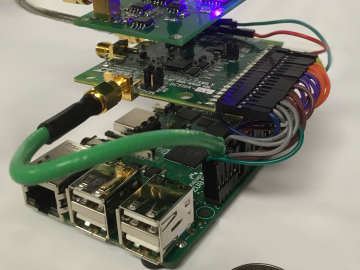
Qrypt, Inc., has exclusively licensed a novel cyber security technology from the Department of Energy’s Oak Ridge National Laboratory, promising a stronger defense against cyberattacks including those posed by quantum computing.
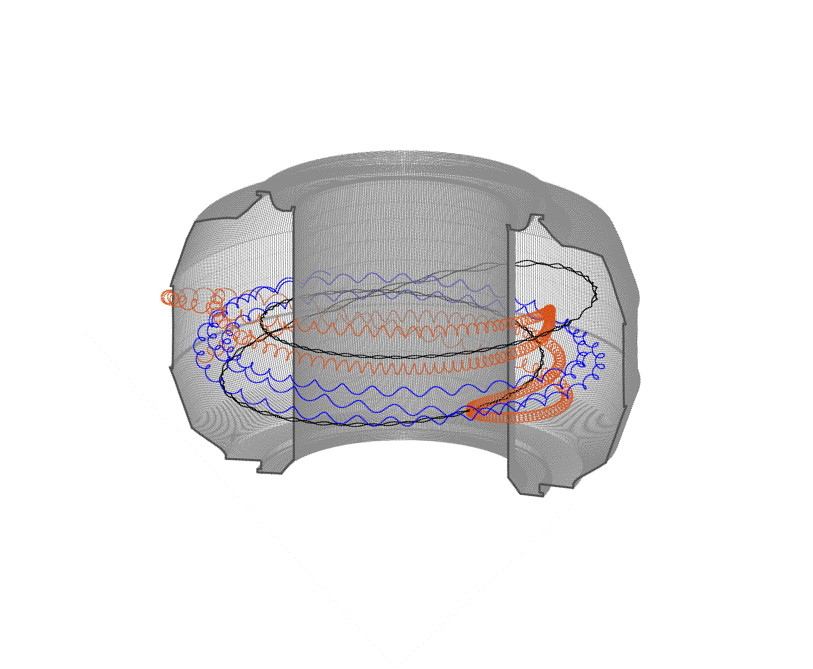
Fusion scientists from Oak Ridge National Laboratory are studying the behavior of high-energy electrons when the plasma that generates nuclear fusion energy suddenly cools during a magnetic disruption. Fusion energy is created when hydrogen isotopes are heated to millions of degrees...

Oak Ridge National Laboratory scientists have developed a crucial component for a new kind of low-cost stationary battery system utilizing common materials and designed for grid-scale electricity storage. Large, economical electricity storage systems can benefit the nation’s grid ...
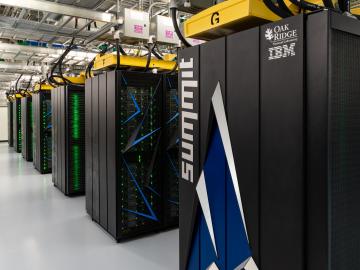
The US Department of Energy’s Oak Ridge National Laboratory is once again officially home to the fastest supercomputer in the world, according to the TOP500 List, a semiannual ranking of the world’s fastest computing systems.

The U.S. Department of Energy’s Oak Ridge National Laboratory today unveiled Summit as the world’s most powerful and smartest scientific supercomputer.

Scientists at the Department of Energy’s Oak Ridge National Laboratory are the first to successfully simulate an atomic nucleus using a quantum computer. The results, published in Physical Review Letters, demonstrate the ability of quantum systems to compute nuclear ph...
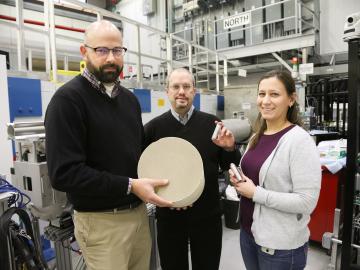
Researchers are looking to neutrons for new ways to save fuel during the operation of filters that clean the soot, or carbon and ash-based particulate matter, emitted by vehicles. A team of researchers from the Energy and Transportation Science Division at the Department of En...
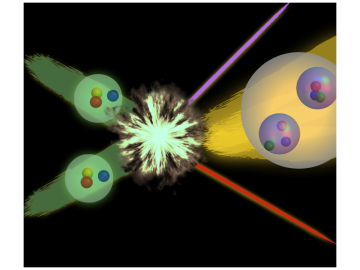
Nuclear physicists are using the nation’s most powerful supercomputer, Titan, at the Oak Ridge Leadership Computing Facility to study particle interactions important to energy production in the Sun and stars and to propel the search for new physics discoveries Direct calculatio...


